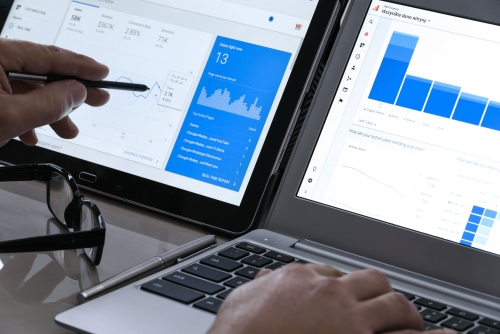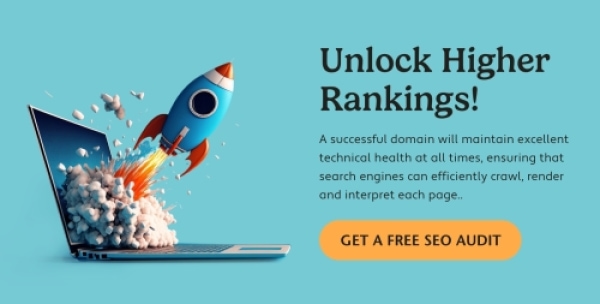6 Simplest SEO Tips to Make Your Website Rank Higher


Want an engaging website?
For any nonprofit website to thrive and attract its target audience, implementing effective SEO methods is crucial. Content SEO techniques like meta titles and descriptions are important, but the structure and performance of a website are even essential as they directly impact user experience and speed test scores.
Key strategies such as optimizing images, minimizing Cumulative Layout Shift (CLS), rigorously checking HTML markup, enhancing accessibility, and refining URL structure are integral. These powerful techniques both catapult search engine rankings and ensure a seamless & captivating experience for visitors, ultimately driving increased donations and unwavering support for the cause. In today's competitive digital landscape, leveraging these advanced SEO methods can significantly elevate your online presence and propel your organization towards achieving its mission.
Based on Morweb professional nonprofit web design & development experience, below 5 simple but easy-to-implement SEO tips are that any nonprofit website can not miss.

1. Optimize Images
- Resizing: Resize images to approximately 1.5x their intended display size to ensure they look crisp while maintaining a small file size.
- Compression: Use tools like TinyPNG to compress images and convert images to WebP format.
- Proper Formats: Use formats like WebP, a better compression rate compared to traditional formats like JPEG and PNG.
- Responsive Images: Utilize
<source>andsrcsetattributes in HTML to serve different image sizes based on the user’s device. - Lazy Loading: Lazy loading is a technique used in computer programming, especially web design and web development, to defer initialization of an object until it is needed. It can contribute to efficiency in the program's operation if properly and appropriately used. Implement lazy loading for images below the fold to delay loading until they are in the viewport, reducing initial load times and bandwidth usage.
2. Optimize CLS (Cumulative Layout Shift)
- Specify Dimensions for Images and Videos: Use width and height attributes for images and videos to allocate the necessary space in the page before they load.
- Avoid Inserting Content: Avoid dynamically inserting content that pushes other elements.
- Reserve Space for Ads and Embeds: Use stylesheet or inline css to make reserved spaces for ads, embeds, and iframes.
- Font Loading: Use '
font-display:swap'to ensure fallback fonts are used until the custom font loads. - Minimizing Third-Party Scripts: Limit the use of scripts like ads and social media that can cause significant layout shifts.
3. Double Check HTML Markup
- “alt” attribute for Images: Include alt text for images to improve accessibility and SEO. alt text (or Alternative text) is text associated with an image that serves the same purpose and conveys the same essential information as the image.
- “width” and “height” attributes for Images and Videos: Use width and height attributes to reserve space and prevent layout shifts.
4. Improve Accessibility
- Use Semantic HTML: Use correct HTML5 semantic elements, such as <header>, <main>, <nav>, and <footer> to provide meaningful structure to your content.
- “alt” attribute for Images: alt text should be descriptive to assist screen readers.
- Keyboard Navigation: Make sure interactive elements like buttons, links and forms can be controlled by keyboard.
- Aria Attributes: Use ARIA attributes to enhance navigation and accessibility.
- Header Tags: Header tags, also known as heading tags, are used to separate headings and subheadings on a webpage. They rank in order of importance, from H1 to H6, with H1s usually being the title containing the primary keyword and it should be only once per page. Header tags improve the readability and SEO of a webpage.
5. Improve URL Structure
- Use Lowercase Letters: URLs are case-sensitive, use consistent lowercase letters can improve readability
- Use Hyphens: Separate words with hyphens rather than underscores or camelcase.
- Keep it Short and Descriptive: Avoid using long, complex URLs. Include keywords that describe the content of the page.
- Match the URL with Page Title: Using an URL closely matches the page title, it helps users anticipate the content they'll find, improving website navigation's intuitiveness.
6. Build Quality Backlinks for your Website
Building quality backlinks is essential for effective SEO practices. Backlinks act as credibility signals from other websites, indicating to search engines that your content is valuable and trustworthy. Effective link building involves creating high-quality content that naturally attracts links, conducting targeted outreach to industry websites, and establishing connections with authoritative domains. Tactics include guest posting, creating shareable content like infographics and research reports, and leveraging industry relationships. An automated link building tool can help identify potential link opportunities and streamline the outreach process. However, it's important to focus on obtaining links from reputable, relevant websites rather than pursuing a high volume of low-quality links. White hat link building techniques prioritize organic, valuable link acquisition that adheres to search engine guidelines and provides genuine value to users.
Mastering these six SEO tips is essential for nonprofit websites to succeed and make a significant impact. These straightforward strategies not only attract more visitors but also turn them into loyal supporters and donors.
In today's digital world, adopting these easy-to-implement SEO practices is crucial for nonprofits to grow, spread their message, and drive real change. They are simple, but they are powerful!
Now let's start from the beginning, signing up one free Google Search Console account, it will help you to monitor every move you make and what impact it may bring. The more you practice, the more you get!
About Google Search Console
Google Search Console is a free service offered by Google that helps you monitor your website traffic, optimize your ranking, and make informed decisions about the appearance of your site's search results. You can also use the information in Search Console to ensure any site maintenance or adjustments you make happen (for instance, via above content SEO techniques) smoothly with respect to search performance. Google Search Console helps you understand and improve how Google sees your site, it offers tools and reports for the following actions:
- Confirm that Google can find and crawl your site.
- Fix indexing problems and request re-indexing of new or updated content.
- View Google Search traffic data for your site: how often your site appears in Google Search, which search queries show your site, how often searchers click through for those queries, and more.
- Receive alerts when Google encounters indexing, spam, or other issues on your site.
- Show you which sites link to your website.
